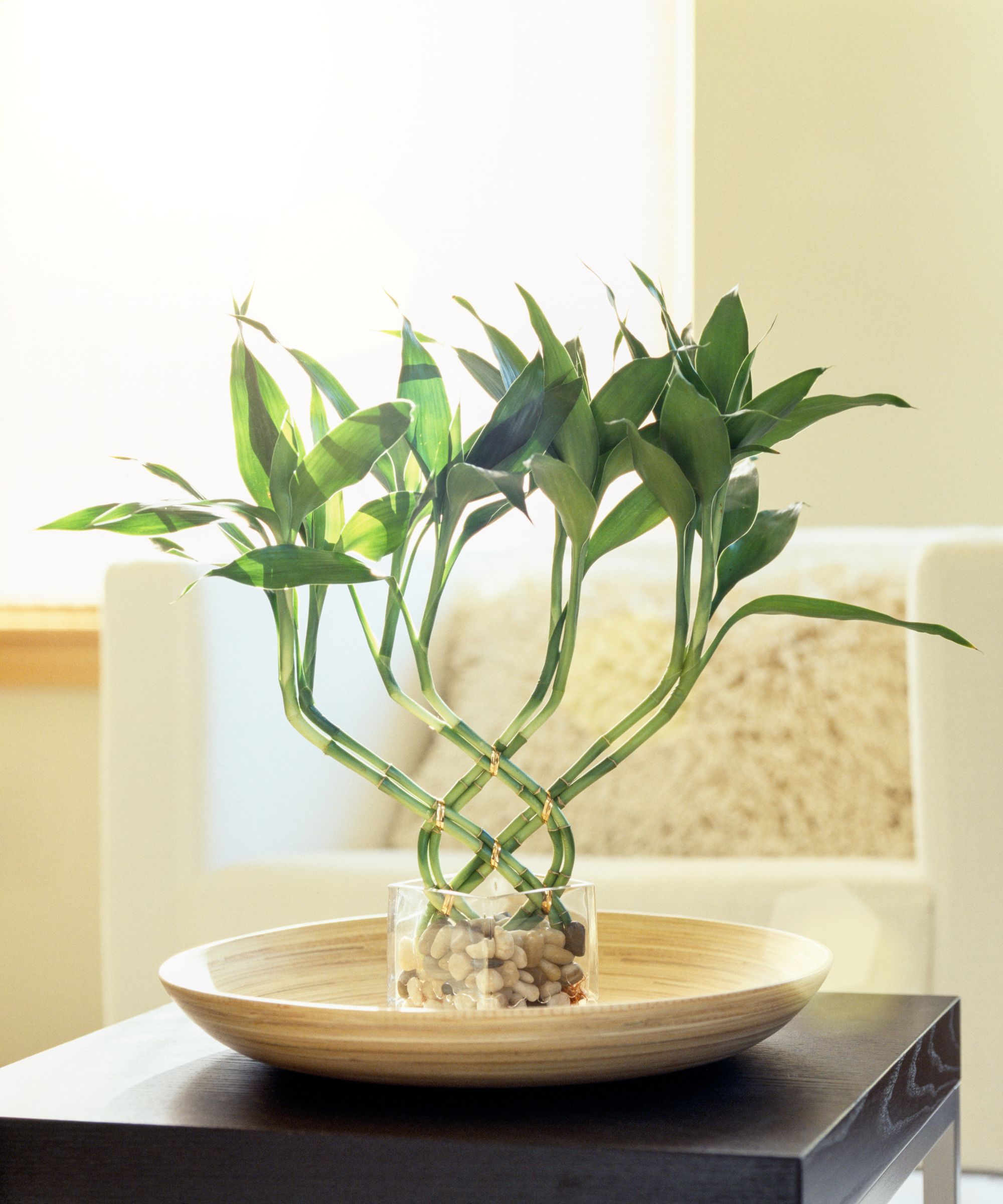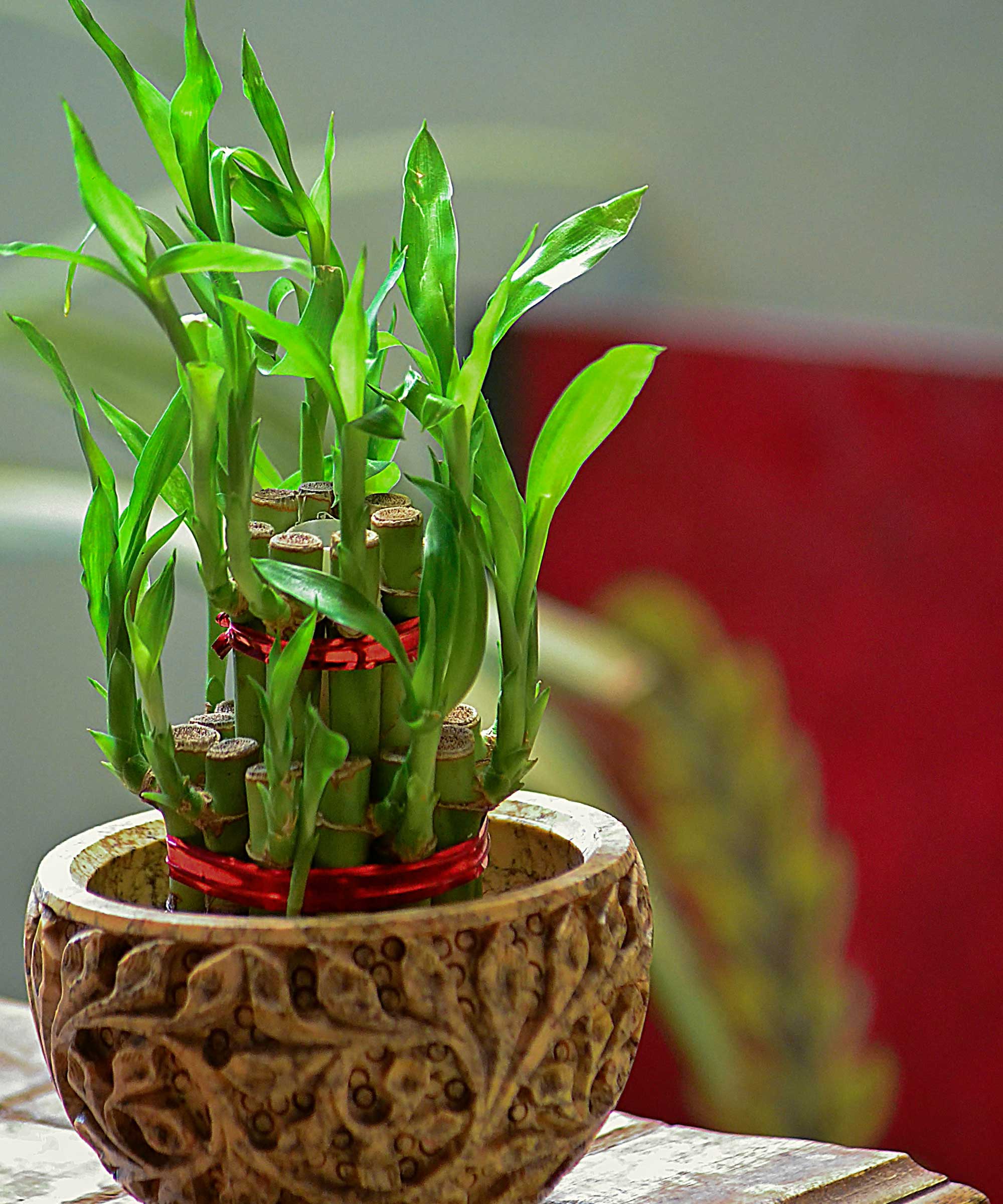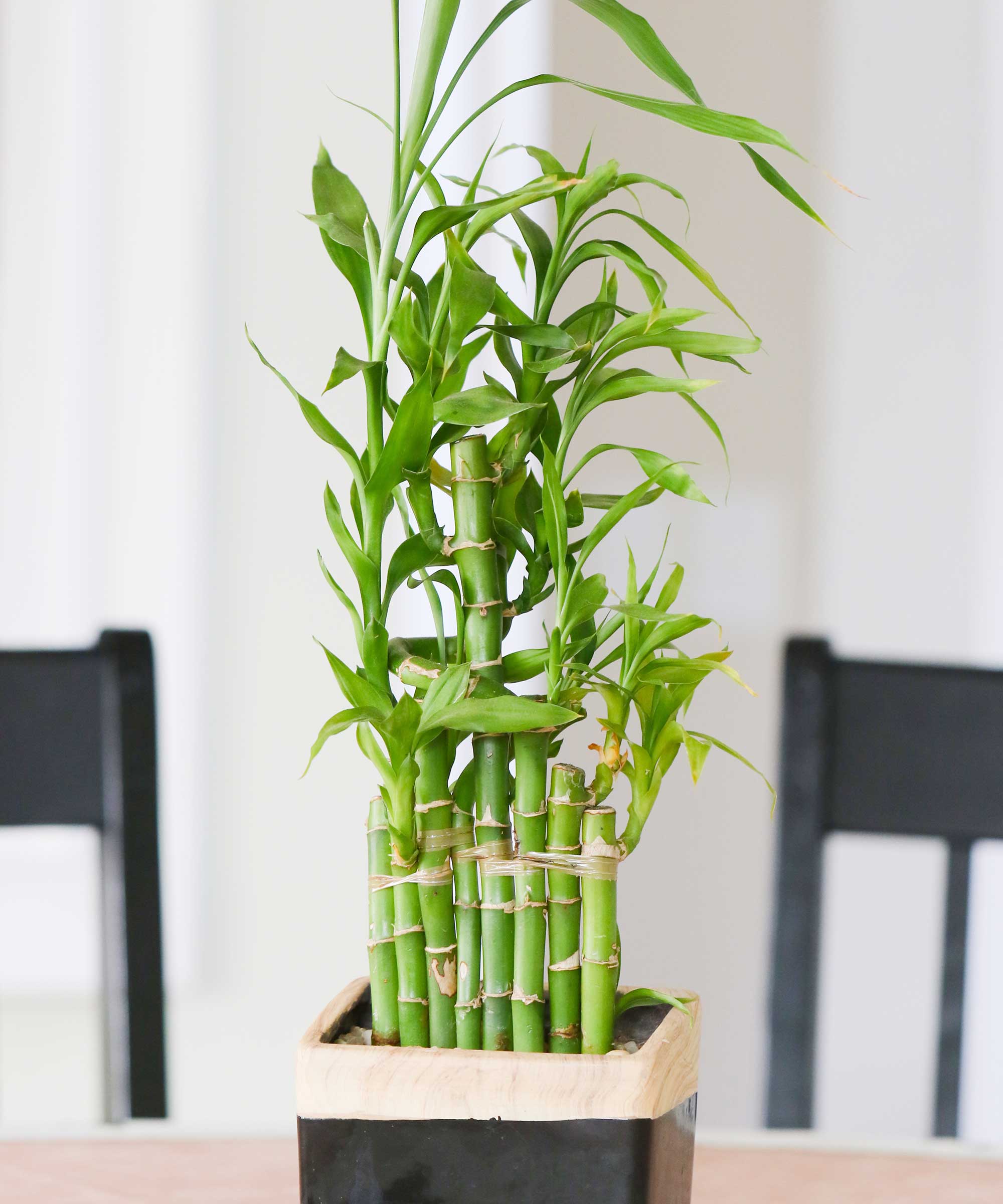
If your lucky bamboo (Dracaena sanderiana) is turning yellow, it's usually a sign that something is affecting its health. Yellowing leaves can indicate a disruption in the plant's ability to photosynthesize, and if left unchecked, this early warning sign can lead to further issues.
There are several potential causes for bamboo turning yellow, and while not all of them are serious, identifying the root cause is crucial to restoring your lucky bamboo's health. Understanding how to grow lucky bamboo properly, evaluating its care routine, and addressing any issues early on can help prevent further damage.
We've consulted experts to uncover the most common causes of a lucky bamboo turning yellow, and reveal how to bring your plant back to its vibrantly green, healthy state.
1. Poor water quality

One of the most common reasons your lucky bamboo can turn yellow is poor water quality. These plants are particularly sensitive to the chlorine and fluoride found in tap water, which can damage their roots and lead to yellowing leaves.
To minimize this risk, water the plant with distilled water or filtered water. If tap water is your only option, let it sit out for 24 hours to allow chlorine to evaporate before using it on your plant.
Proper water management is equally important, especially for lucky bamboo grown in water (hydroponically). As Arborist, Scott Seargeant advises, 'If the water smells bad, it’s time for a change. Always use chlorine-free water, as chlorine can damage the roots and cause yellowing.'
Ensuring the water is clean, free of harmful chemicals, and regularly refreshed, can help prevent yellowing and keep your lucky bamboo vibrant and healthy.
2. Improper light conditions

'Lucky bamboo likes moderate to bright indirect sunlight,' explains Scott Seargeant. However, it is sensitive to extremes. 'Too much direct sunlight can scorch the leaves, leading to yellowing and browning around the edges, whereas insufficient light can cause the leaves to lose their vibrant green color, appearing thin and yellow.'
Consider the light conditions where your lucky bamboo is placed – if it’s sitting in a sunny window, consider moving it to a spot with filtered light, such as near a north-facing window or behind sheer curtains or a sun-blocking glass film, available at Amazon. If your plant is in a dimly lit area, relocate it closer to a source of indirect light, away from direct sunbeams.
Additionally, to achieve the quintessential lucky bamboo curl and prevent one side of the plant from receiving too much or too little light – both of which can cause yellowing and uneven growth – regularly rotate the pot. Turning it every few days will help to ensure balanced light exposure, encouraging uniform growth and keeping your lucky bamboo green.
3. Inconsistent or incorrect temperature levels

Temperature can play a significant role in the health of your lucky bamboo. 'Lucky bamboo doesn’t like cold air,' explains Scott. 'They thrive in warm environments, ideally in the mid-70s to 80s Fahrenheit.
'Yellowing can also be caused by exposure to air conditioning vents, cold windows, or frequently used doors that let in drafts of cold air.' Likewise, avoid placing it near heating vents or other sources that emit dry, warm air, as this stresses the plant and can lead to yellowing.
To help your lucky bamboo maintain its vibrant green color and overall health, keep it in a stable warm location, such as a cozy corner of a room, or a shelf near an east-facing window.
Keeping a thermometer and hygrometer near your lucky bamboo can help you monitor temperature (and humidity) levels to ensure the plant stays in its ideal range, preventing exposure to cold drafts or dry air. This AcuRite indoor digital thermometer and hygrometer at Walmart is a best-seller.
4. Over-fertilization

'Over-fertilization, or applying too many nutrients, is a common mistake among beginners, and it often results in yellowing leaves,' says Mathew Wilson, horticulturist and CEO of Handy Gardeners.
Scott Seargeant adds: 'Too much fertilizer can cause yellow leaves and lead to disease issues. Excessive nutrients can increase the salt concentration in the water, which stresses the plant and may lead to root dieback. '
Moderation is key to maintaining a healthy, vibrant plant. A small quantity of fertilizer is ideal – just a drop of liquid plant food or diluted liquid houseplant fertilizer should do the trick. We recommend this liquid fertilizer from Amazon.
Matthew Wilson advises: 'If you choose to fertilize, make sure to dilute the fertilizer significantly and apply it infrequently – once a month at most should be sufficient.'
Additionally, Scott warns, 'Fertilizing lucky bamboo growing in lower light conditions can lead to disease problems.' To avoid this issue, ensure your lucky bamboo is in a spot with adequate light before fertilizing, as this will help the plant better absorb the nutrients without the risk of overloading it.
5. Natural leaf aging

Not all yellowing is a warning sign that the plant is unhealthy. 'Yellowing leaves on older parts of your lucky bamboo plant can be a natural and healthy occurrence,' explains Scott. 'Some yellowing or dying of older leaves is normal. Remove them as needed to maintain the plant’s appearance.'
Matthew Wilson adds: 'If your plant requires pruning, make sure to carefully remove the yellowing leaves along the base of the stem. It’s important to distinguish between normal leaf aging and signs of stress or disease, as some yellowing on other parts of the plant may simply be a result of natural growth cycles.'
In other words, don’t be alarmed if you notice the occasional yellow leaf – it's part of the plant's life cycle. Just regularly remove any yellowing or dead leaves with clean sharp pruning scissors or shears, such as these pruning shears from Amazon, to keep the plant looking tidy and encourage healthy growth.
6. Incorrect soil type

If you're growing your lucky bamboo in soil rather than water, the root of the yellowing issue may be down to the type of soil you are using. The wrong type of soil can lead to poor drainage and root stress, which may cause your lucky bamboo to turn yellow.
Lucky bamboo prefers well-draining soil that retains moisture without becoming soggy. Soil that’s too heavy or dense can trap excess moisture, leading to root rot and yellowing leaves. Avoid heavy, clay-like soils that can retain too much water.
To keep the plant healthy, use a soil mix designed for tropical plants, with a balance of aeration and moisture retention, such as a mix designed for orchids. We recommend this Miracle-Gro tropical potting mix from Walmart.
Regularly check the soil to make sure the soil is fresh and not compacted, as compacted soil can restrict root growth and lead to yellowing leaves. You can do this by gently poking the soil with your finger to check its texture. If it feels dense or too packed, it may be time to repot your lucky bamboo with a fresh, well-draining soil mix to prevent excess moisture retention, which can cause yellowing leaves, and allow for healthy root development.
FAQs
What humidity levels do lucky bamboo prefer?
Lucky bamboo prefers humidity levels between 40% and 60%. If the air is too dry, especially in heated or air-conditioned rooms, it may cause the plant to show signs of stress, such as yellowing leaves.
To help maintain the ideal humidity, consider using a humidifier or placing the plant on a tray of water with pebbles to increase moisture around it. We recommend this humidity tray with rocks, rated 4.5 stars on nearly 3,000 reviews on Amazon.
Final tip to stop your lucky bamboo from yellowing? Occasionally misting the leaves with distilled water can help maintain humidity around the plant, preventing the leaves from drying out and keeping it looking lush and vibrant.







